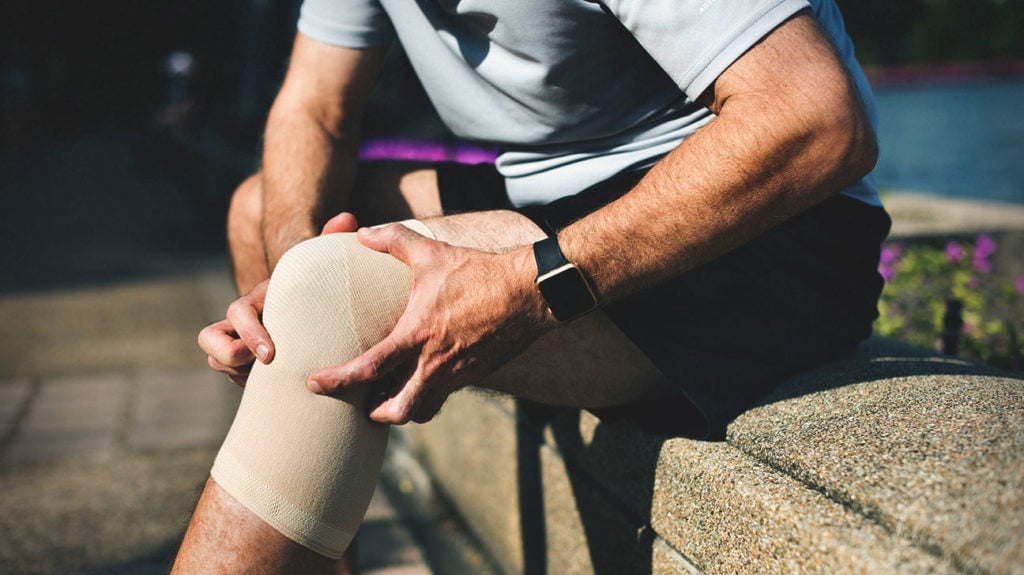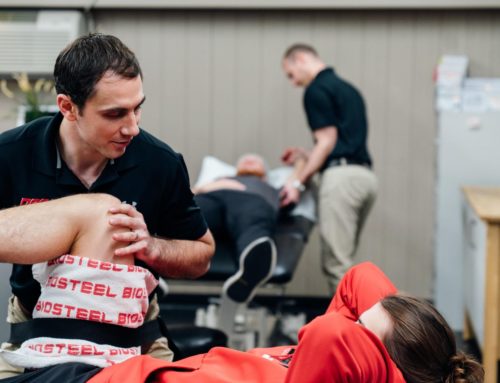Osteoarthritis (OA) is the most common form of arthritis. It involves degeneration or breaking down of the joint cartilage and underlying bone. Joint cartilage is the smooth protective material that covers the ends of bones within a joint. OA is more common than all other forms of arthritis combined. One of the most common areas for OA is in the knee. Symptoms can include intermittent or constant pain, swelling, stiffness, and decreased mobility, significantly impacting a person’s life. There is no cure for OA, but early detection and interventions can aid in the management of symptoms and slow the progression of OA.
Diagnosing OA
OA is a continuous degenerating disease, meaning there is no cure or ability to stop the joint from breaking down, but we can slow down the process and/or assist with symptoms. Early diagnosis of OA can significantly reduce symptoms and prolong the health of the joint with hopes of reducing the need for serious interventions such as total knee replacements. OA of the knee is generally diagnosed by a physician or healthcare practitioner with a complete health history, physical examination, and possibly imaging such as x-rays to see how the joint is being affected.
Management
Being diagnosed with knee OA can be overwhelming. Being told there is no cure for your pain can greatly impact a person’s mental and physical health. Fortunately, there are many ways to assist in the management of knee OA symptoms.
- Pain and anti-inflammatory medications (can be oral or topical) – may be prescribed by physician.
- Athletic/physiotherapy or massage can assist with pain management and exercise/mobility.
- Bracing – Custom knee braces and/or off the shelf braces can assist with pain and stability to improve ones functioning.
- Injections – Cortisone and hyaluronic acid (eg. Synvisc) can assist in lubricating and reducing pain within the joint.
- Surgery – Total knee replacements or partial replacements – reserved for most serious form of OA – can take significant amount of time before able to access this option even in serious cases.
Knee Bracing
There are two main kinds of knee brace categories:
Off The Shelf Braces
Off The Shelf Braces (OTS) include knee sleeves and light stability (hinged) braces. These generally help with very mild cases of OA by providing warmth, compression (to aid with swelling) and they can provide some mild stability, although this is limited by the brace design.
Custom OA Knee Braces
Custom OA knee braces are designed specifically for OA and unlike OTS braces are created with unique specifications based on the individual. Generally they provide a better fit than OTS braces and offer much better stability and pain reduction. OA of the knee can affect 3 different areas of the knee, the medial (inside), lateral (outside) or the joint between the patella (kneecap) and the femur. Most often OA will affect the medial and lateral compartments which reduces the space within the joint. Custom braces are designed to off load the affected side and increase the narrowed joint space. Basically, OA knee braces can help to increase the joint space of the affected side. The intent of these braces are to allow for better mechanical movement of the knee, therefore reducing pain and stress on the joint. This allows the individual to return to normal activities and aid in slowing down the degenerative process.
Things you can do include:
- Manage overall body weight – keeping excess weight off will take stress off the knees.
- Keep Moving – despite OA being a “wear and tear” injury, it is vital to joint health that you keep moving, this could be light weight bearing exercises such as swimming, biking, or walking and if managed properly regular high intensity exercises such as running or Crossfit training is still possible.
- Maintain leg strength and flexibility.
- Work with your healthcare provider to find quality pain management strategies – ie. Ice, compression, rest, exercises, bracing.
For more information on Custom Knee Braces or Off The Shelf Braces book a Free Consultation with Teresa Budwal by clicking here.
Written by: Teresa Budwal, Certified Athletic Therapist, Registered Massage Therapist






